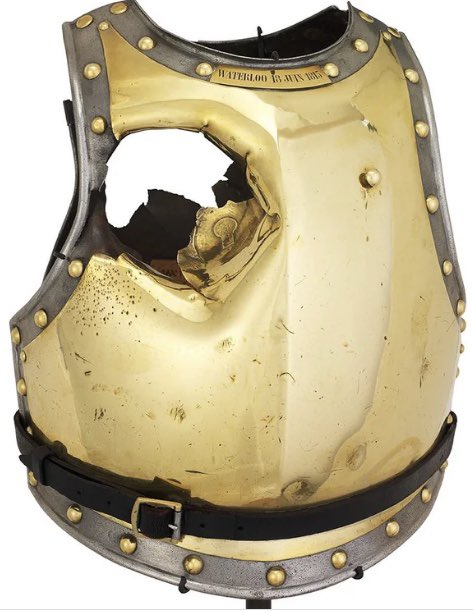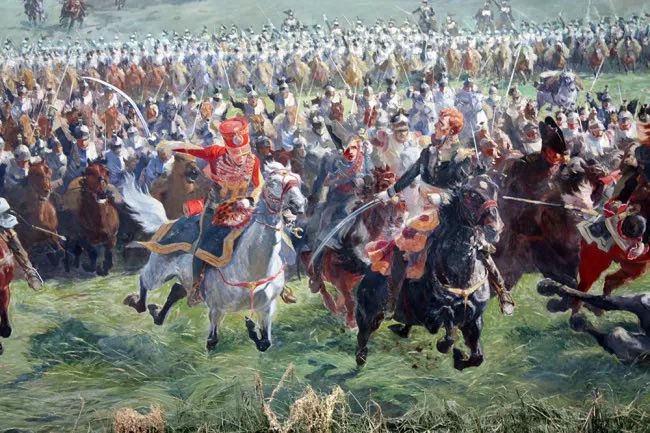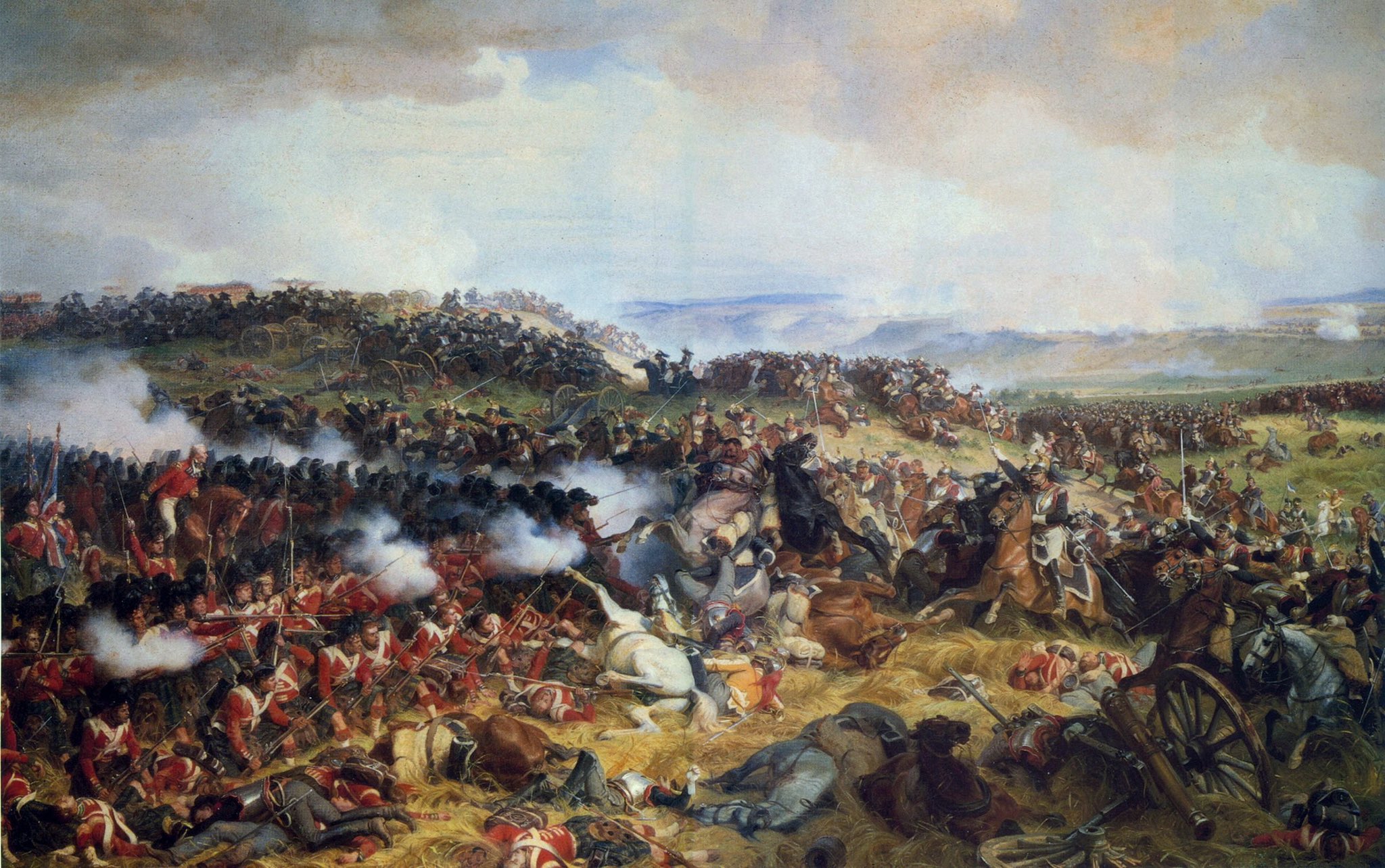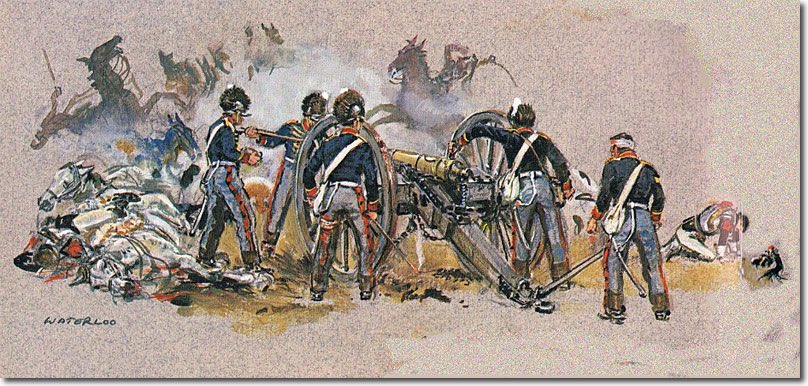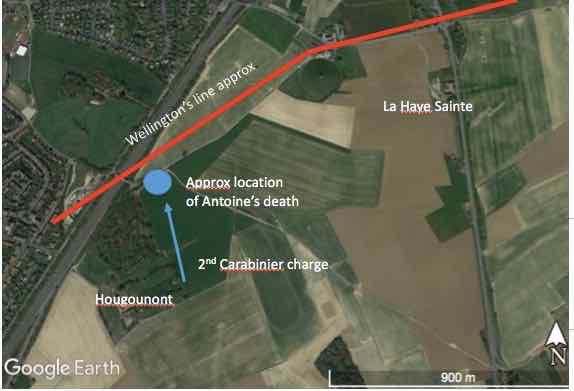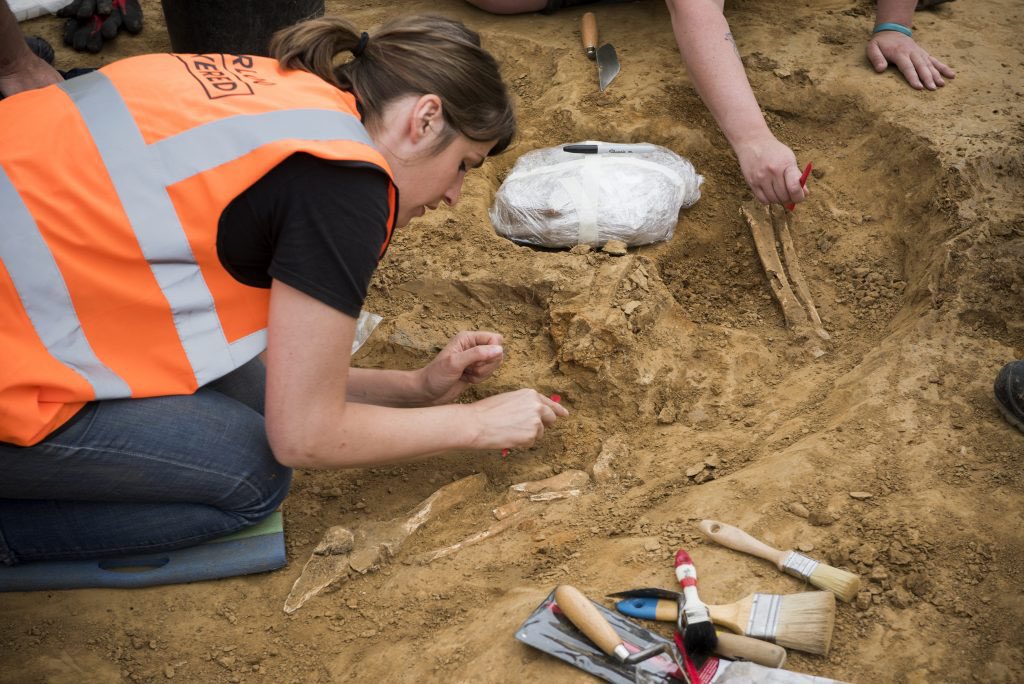Thread
Thanks to social media this is one of the most famous battlefield relics from Napoleonic era. It captures the moment of a man's death. It is not a joke or a Monty Python sketch about a scratch. It might not seem so funny if we knew more about the man and his death. 1/10
This cuirass was worn by a French cavalryman in 4th company, 2nd Carabinier Regt at Waterloo on 18 June 1815. His name was Antoine Fauveau. He was 23 yrs old & he died sabre in hand. He not long been conscripted and he had benefitted from no more than 7 days training. 2/10
Morale & cohesion within the regiment was poor & it was held back at Quatre Bras on 16 June. Things got worse at Waterloo when some officers defected. The battle raged all day but Napoleon had failed to break through Wellington’s lines on the ridge at Mont St Jean. 3/10
Around 4pm French put in cavalry charges against Wellington’s Centre/Right – famously under Ney. More of a slog up muddy hill than a gallop. By the end, c.10,000 horsemen had engaged in the messy ebb & flow against allied cavalry, artillery & infantry arranged in squares. 4/10
Throwing more men into this meat grinder didn’t help, but 1st & 2nd Carabiniers ordered forward against ‘20 guns’ from east edge of Hougoumont at c.6.30pm. Men & horses slogged up hill to be met by muskets & cannon. The reserve Div made 3 advances but each time repulsed. 5/10
Antoine was hit by a 9lb cannon ball – solid lump of iron – fired by Royal Horse Artillery. Ideally these balls hit the ground, bounced & then hit men in the body, but at Waterloo the ground was softened by rain so not as effective as they could be. 6/10
My guess is Antoine hit by direct rather than grazing fire after cresting ridge – after working way around advanced infantry. 4” dia shot hit right breast & caused massive trauma, death instant – shock wave destroyed every organ but armour front & back held torso together. 7/10
Napoleon sent in Guard but battle was lost & all told around 15-20,000 men dead on field. Over next 10 days bodies stripped & then buried or burned. Every item of hardware & clothing was recycled or sold & the field became a tourist attraction. The cuirass a prized trophy. 8/10
The bloody plate was pulled from his body before pitching him into mass grave. Pay book was found lodged in padding. It gave his personal details: ‘long, freckled face with a large forehead, blue eyes, hooked nose & a small mouth.’ He was a dairyman & about to get married. 9/10
Antoine was a brave man, but like most who died at Waterloo his grave is unmarked, though I have an idea where it is. With @DigWaterloo I work with military veterans on archaeology of Waterloo. We’ve seen the bones of dead & wounded and we respect the men they once were. 10/10
Amazing response. If you are interested, look out for a related paper in @JofConflictArch appearing soon. In addition to my own research with @DigWaterloo for this thread, l hit the books (during Father Brown, which puzzled @DrMariaPollard). These were key:
Had meant to add. This amazing object can be seen in the Musée de l’Armée in Paris. An essential destination if you are ever in that wonderful city.
